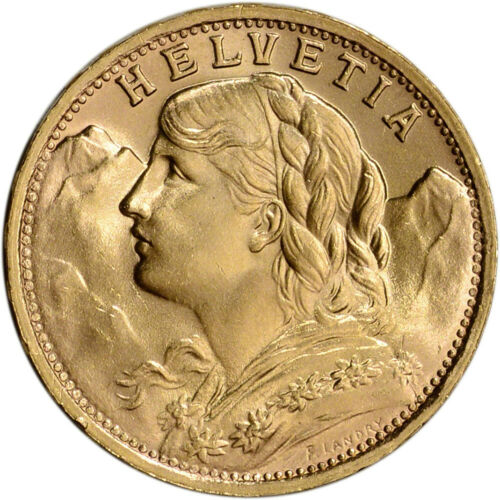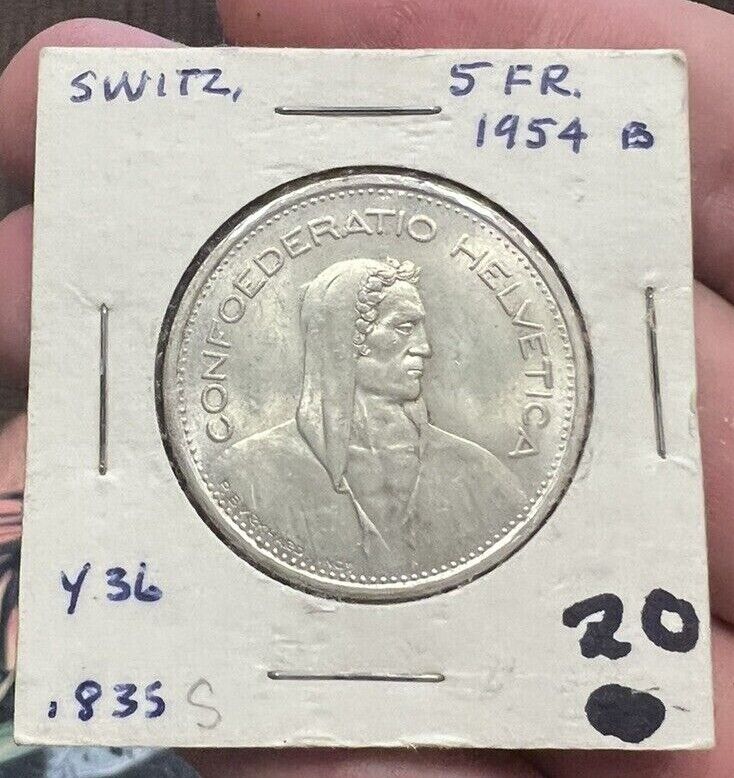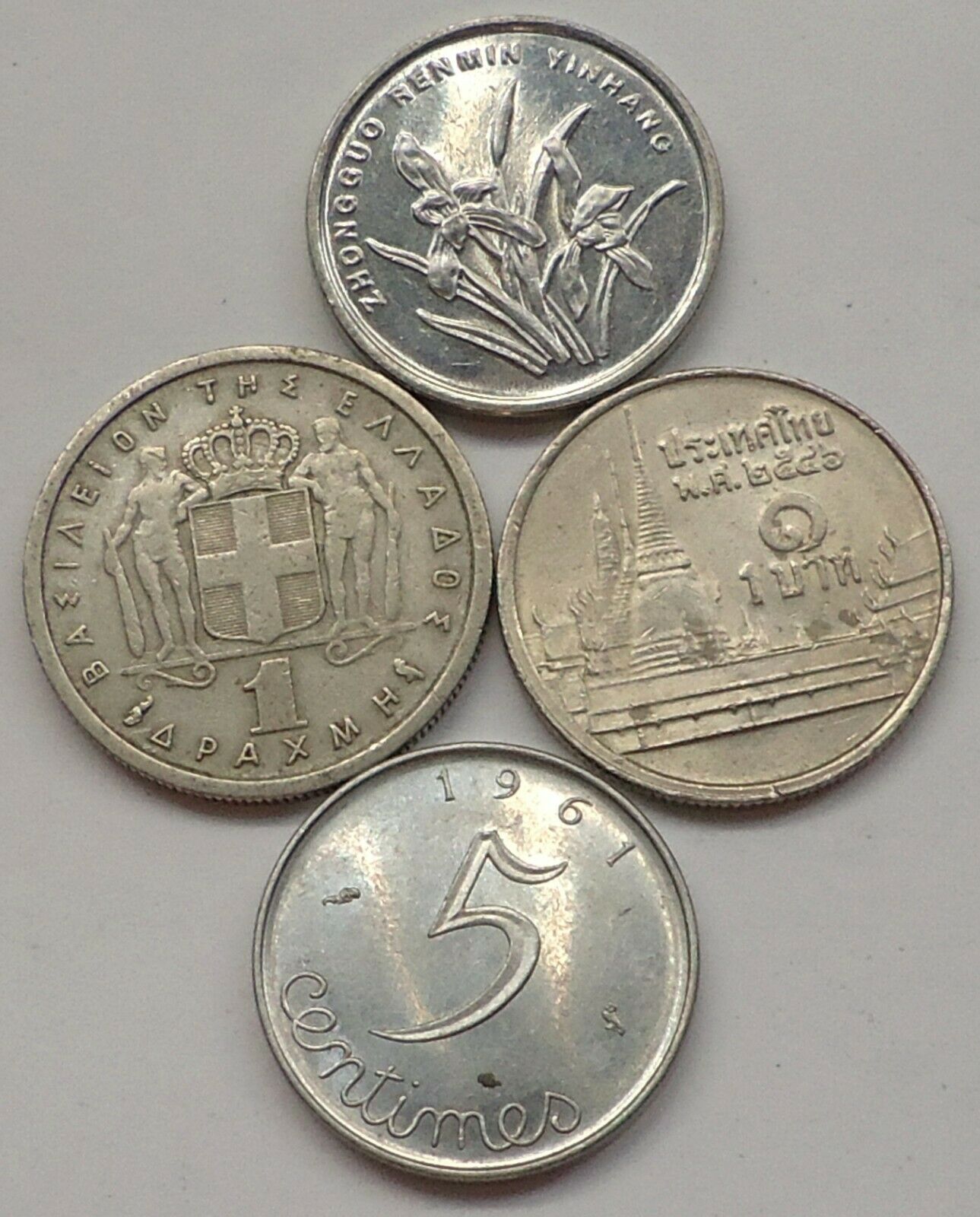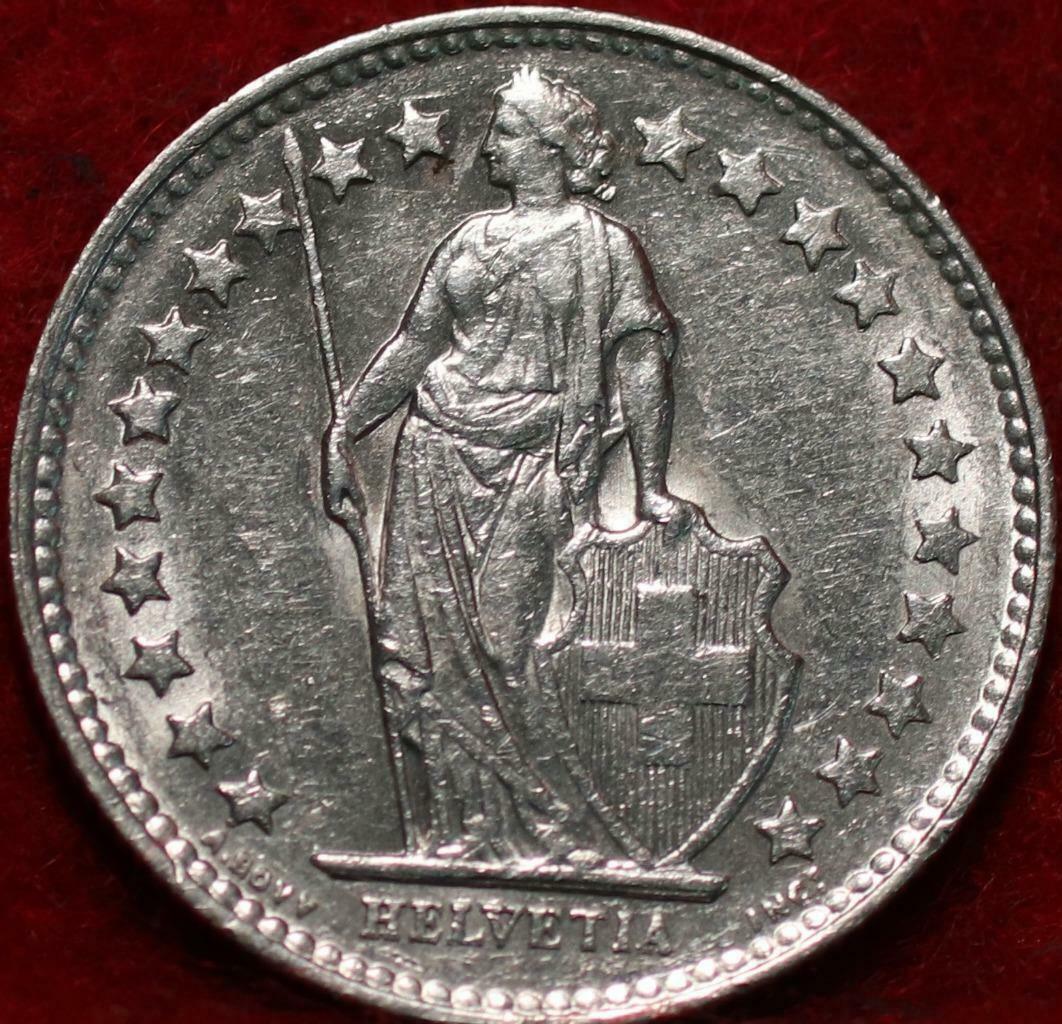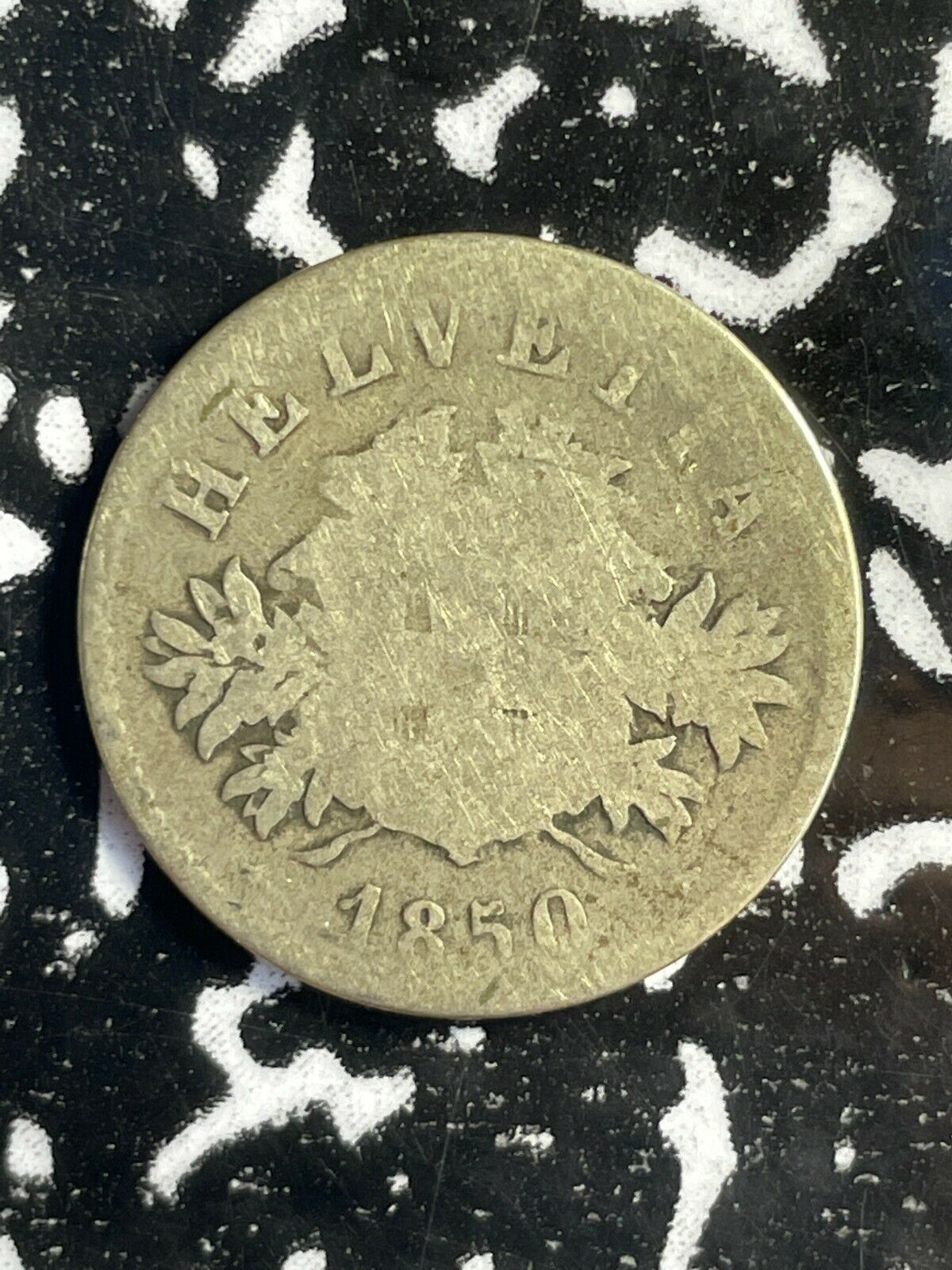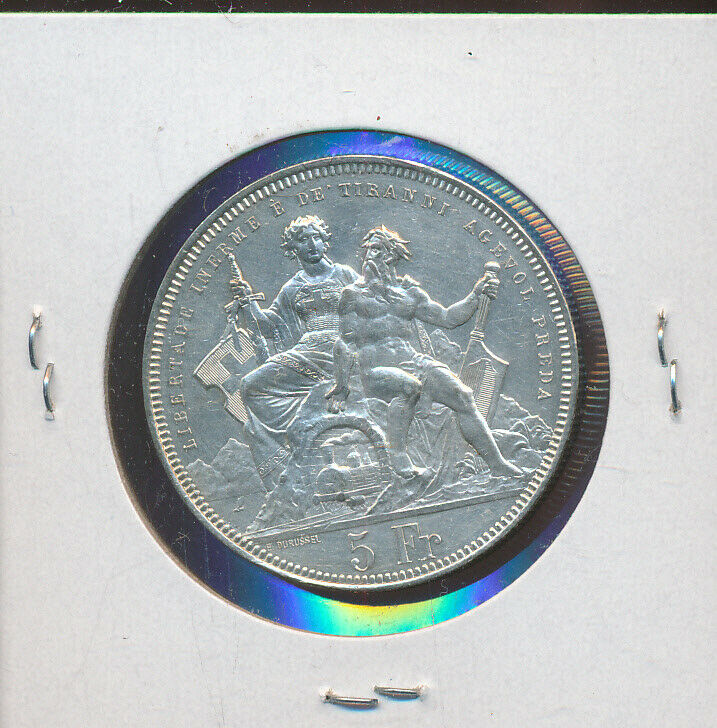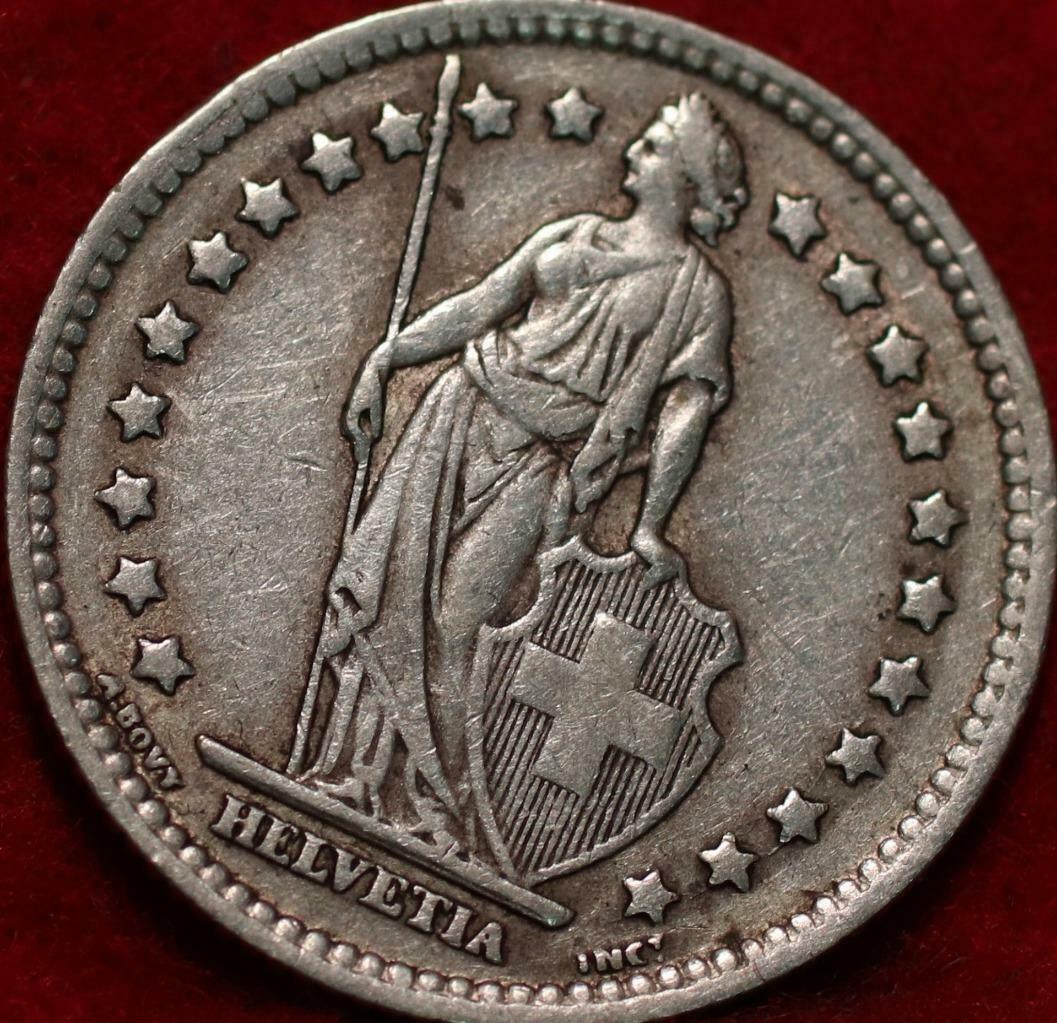-40%
1939 B SWITZERLAND LUCERNE Large Antique Swiss Gold 100 Francs Coin NGC i87195
$ 3206.88
- Description
- Size Guide
Description
Item:i87195
Authentic Coin of:
Switzerland
-
Luzern Shooting Festival, 1939
1939 B
Gold 100 Francs 27mm (17.5 grams) 0.900 Gold
Reference: X# S21 | Engraver: Emil Wiederkehr
Certification:
NGC
MS 64 5747137-012
EIDGENÖSSISCHES SCHÜTZENFEST IN LUZERN EMIL WIEDERKEHR •1939•, Kneeling sharpshooter with rifle.
EINLÖSBAR+BIS+31.+AUGUST+1939 EINER FÜR ALLE ALLE FÜR EINEN B 100 FR, Shield within two dotted circles.
You are bidding on the exact item pictured, provided with a Certificate of Authenticity and Lifetime Guarantee of Authenticity.
The
Canton of Lucerne
is a canton of Switzerland. It is located in the centre of Switzerland. The population of the canton (as of 31 December 2018) is 409,557. As of 2007, the population included 57,268 foreigners, or about 15.8% of the total population. The cantonal capital is Lucerne.
The canton of Lucerne comprises territories acquired by its capital Lucerne, either by treaty, armed occupation or purchase. The first town acquired was Weggis (in 1380), Rothenburg, Kriens, Horw, Sempach and Hochdorf (all in 1394), Wolhusen and Entlebuch (1405), the so-called "Habsburger region" to the northeast of the town of Lucerne (1406), Willisau (1407), Sursee and Beromünster (1415), Malters (1477) and Littau (1481), while in 1803, in exchange for Hitzkirch, Merenschwand (held since 1397) was given up.
Prehistory
The oldest traces of humans in the Lucerne area are stone artifacts and cave bear bones found in the Steigelfadbalm cave on Mt. Rigi from the Middle Paleolithic or about 30,000 BC. Other animal bones including mammoth, reindeer and giant deer from the local glacial maximum have also been found in the canton. Around 17,000 BC the glaciers disappeared from the Swiss plateau and recolonization is likely at that time.
The first Paleolithic and Mesolithic settlement discovered in the canton is in the Wauwilermoos, which is now a Swiss heritage site of national significance. A number of other settlements have since been found, mainly on sandy, dry elevations in the immediate vicinity of water. The settlements of Egolzwil 3 in Wauwilermoos in Egolzwil, Seematte at Hitzkirch and Halbinsel in Sursee are part of the Prehistoric Pile dwellings around the Alps a UNESCO World Heritage Site.
The Wauwilermoos houses had wooden or bark floors and hearths of clay. The villages had ceramic vessels and wood, bone, antler, stone and flint tools as well as textiles. Copper ax blades and knives provide the first evidence of metal use in Switzerland. Imported mollusks show that there were trade connections to the Mediterranean. The bones at Egolzwil 3 are over two thirds from domestic animals with the remainder from wild animals. The main domesticated animals were sheep, goats and pigs with only a few domestic cattle. The animals hunted included deer, roe deer, wild boar and elk.
During the Bronze Age the canton was quite settled. There were a number of settlements on the shores of Lake Sempach and Lake Baldegg along with hilltop settlements, graves and scattered items throughout the area. At Hochdorf-Baldegg a fenced village from the early Bronze Age (2200-1500 BC) was uncovered. The single-story houses all had clay or stone hearths. During the Middle Bronze Age (1550-1350 BC) most of the villages were not located directly on the lake shores. The Late Bronze Age settlement at Sursee-Zellmoos on Lake Sempach featured houses arranged in rows with mortared stone. The walls were timber lined with clay. Another Late Bronze Age settlement near the village of Schötz was densely populated between 1350 and 800 BC.
While numerous individual Iron Age items have been found, almost no settlements have been discovered. From the Hallstatt period (800-480 BC) mainly graves have been discovered. Very little is known about the La Tène period (480-30 BC) in Lucerne. Some iron tools, gold coins, ceramic vessels and a glass bangle as well as a burial ground with at least four graves have been found.
During the Roman era, the canton was once again thickly settled. A number of farms were built in the north-south running valleys (Wigger, Suhre, Wyna and See valleys). During the 1st century AD, the farms provided food for the Legion camp in Vindonissa and for the larger settlements located in the Swiss plateau.
Towards the end of the 1st century there was a vicus at Sursee. The remains of houses show that there were a number of small shops and manufacturing buildings in the town. The west bank of the Suhre was fortified with a stone slip and may have served as a ship or raft berth. Imports from various regions of the Roman Empire (southern Spain, southern Italy, Lipari, southern and eastern Gaul and the Germanic areas) provide evidence of extensive trade relations. Sursee was likely a freight hub for trade with the entire Alpine region.
Lucerne grew up around a Benedictine monastery, founded about 750 on the right bank of the Reuss by Murbach Abbey in Alsace, of which it long remained a "cell". It is first mentioned in a charter of 840 under the name of
Luciaria
, which is probably derived from the patron saint of the monastery, St Leodegar. The name
Lucerrun
is first mentioned in 1252. At some point, a small village grew up around the monastery. The first signs of a municipal constitution appear in 1252.
With the growing power of the Habsburgs in the area the ties that bound Lucerne to Murbach weakened. In 1291 the Habsburgs finally purchased Lucerne from Murbach. The purchase of Lucerne by the Habsburgs drove the three forest cantons (Uri, Schwyz and Unterwalden) to form an Eternal Alliance, an act that is considered to be the foundation of Switzerland. In 1332 Lucerne became the fourth member of the
Eidgenossen
or Swiss Confederation, and the first town to join the rural forest cantons.
The Battle of Sempach (1386) near Sempach (which while allied wouldn't become part of the canton for 8 more years) drove the Habsburgs out of the region and strengthened the Confederation. That victory led also to the gradual acquisition of territory ruled by and from the town.
Amstalden, a wealthy innkeeper Schüpfheim in the Entlebuch valley of the canton of Lucerne, was the leader of a planned rebellion of the valley against the city of Lucerne. In a plot to limit the power of the city, officials from the neighbouring canton of Obwalden had promised their support. The conspiracy was detected before they could stage the planned coup. On 24 August 1478, Amstalden was arrested, tortured and interrogated, and finally beheaded in November 1478.
The incident furthered the distrust amongst rural and urban cantons in the Old Swiss Confederacy and was one of the reasons for the conclusion of the Stanser Verkommnis (Treaty of Stans) in 1481, an important coalition treaty of the cantons of the Old Swiss Confederacy
During the Reformation Lucerne remained attached to Roman Catholicism, of which ever since it has been the great stronghold in Switzerland. The papal nuncio resided here from 1601 to 1873. In the 16th century, during the early modern age, the town government fell into the hands of an aristocratic oligarchy, whose power, though shaken by the Swiss peasant war of 1653 in the Entlebuch, lasted until 1798. Under the French-supported Helvetic republic (1798-1803) Lucerne was the seat of the central government. When the republic collapsed, under the Act of Mediation (1803) it was one of the six "Directorial" cantons and during the Restoration (from 1815 to 1848) it was one of the three ruling cantons.
The patrician government was swept away by the cantonal constitution of 1831. But in 1841 the Conservatives regained power. They quickly recalled the Jesuits, who had been expelled by earlier radical governments, to head the cantonal school system. The riots that followed brought about the Sonderbund War (1847) in which the Conservatives were defeated, the decisive battle taking place at Gisikon, not far from Lucerne.
Switzerland
, officially the
Swiss Confederation
(Latin:
Confoederatio Helvetica
, hence its abbreviation CH), is a federal parliamentary republic consisting of 26 cantons, with Bern as the seat of the federal authorities, the so-called
Bundesstadt
("federal city"). The country is situated in Western and Central Europe, where it is bordered by Italy to the south, France to the west, Germany to the north, and Austria and Liechtenstein to the east. Switzerland is a landlocked country geographically divided between the Alps, the Swiss Plateau and the Jura, spanning an area of 41,285 km
2
(15,940 sq mi). While the Alps occupy the greater part of the territory, the Swiss population of approximately 8 million people is concentrated mostly on the Plateau, where the largest cities are to be found. Among them are the two global cities and economic centres of Zürich and Geneva.
The establishment of the Swiss Confederation is traditionally dated to 1 August 1291, which is celebrated annually as Swiss National Day. It has a long history of armed neutrality-it has not been in a state of war internationally since 1815-and did not join the United Nations until 2002. It pursues, however, an active foreign policy and is frequently involved in peace-building processes around the world. Switzerland is also the birthplace of the Red Cross and home to numerous international organizations, including the second largest UN office. On the European level, it is a founding member of the European Free Trade Association and is part of the Schengen Area - although it is notably not a member of the European Union, nor the European Economic Area. Switzerland comprises four main linguistic and cultural regions: German, French, Italian and the Romansh-speaking valleys. Therefore, the Swiss, although predominantly German-speaking, do not form a nation in the sense of a common ethnic or linguistic identity; rather, the strong sense of identity and community is founded on a common historical background, shared values such as federalism and direct democracy, and Alpine symbolism.
Switzerland has the highest nominal wealth per adult (financial and non-financial assets) in the world according to Credit Suisse and eighth-highest per capita gross domestic product on the IMF list. However, Switzerland is also the most expensive country in the world to live in, as measured by the price level index.
Swiss citizens have the second-highest life expectancy in the world on the UN DESA list. Switzerland is tied with the Netherlands for the top rank on the Bribe Payers Index indicating very low levels of business corruption. Moreover, for the last five years the country has been ranked first in economic and tourist competitiveness according to the Global Competitiveness Report and the Travel and Tourism Competitiveness Report respectively, both developed by the World Economic Forum. Zürich and Geneva have each been ranked among the top cities with the highest quality of life in the world, with the former coming second globally according to Mercer. However, Mercer also rates those two cities as the fifth- and sixth- most expensive cities in the world to live in.
Frequently Asked Questions
Mr. Ilya Zlobin
, world-renowned expert numismatist, enthusiast, author and dealer in authentic ancient Greek, ancient Roman, ancient Byzantine, world coins & more.
Who am I dealing with?
You are dealing with Ilya Zlobin, ancient coin expert, enthusiast, author and dealer with an online store having a selection of over 15,000 items with great positive feedback from verified buyers and over 10 years experience dealing with over 57,000 ancient and world coins and artifacts. Ilya Zlobin is an independent individual who has a passion for coin collecting, research and understanding the importance of the historical context and significance all coins and objects represent. Most others are only concerned with selling you, Ilya Zlobin is most interested in educating you on the subject, and providing the largest selection, most professional presentation and service for the best long-term value for collectors worldwide creating returning patrons sharing in the passion of ancient and world coin collecting for a lifetime.
How long until my order is shipped?
Orders are shipped by the next business day (after receipt of payment) most of the time.
How will I know when the order was shipped?
After your order has shipped, you will be left positive feedback, and that date could be used as a basis of estimating an arrival date. Any tracking number would be found under your 'Purchase history' tab.
USPS First Class mail takes about 3-5 business days to arrive in the U.S. International shipping times cannot be estimated as they vary from country to country.
Standard international mail to many countries
does not
include a tracking number, and can also be slow sometimes.
For a tracking number and signature confirmation, you may want to do Express Mail International Shipping, which costs more, however, is the fastest and most secure. Additionally you may be able to receive your order in as little as 3-5 business days using this method. For Express Mail International, it may be possible to place up to 10-15 items in one package (for the one shipping cost) as it is flat rate envelope, which may be the most cost-effective, secure and fastest way to receive items internationally. Send me a message about this and I can update your invoice should you want this method.
Getting your order to you, quickly and securely is a top priority and is taken seriously here.
Great care is taken in packaging and mailing every item securely and quickly.
Please be aware, I cannot take responsibility for any postal service delivery delays, especially for international packages as it may happen in rare instances.
What is a certificate of authenticity and what guarantees do you give that the item is authentic?
Each of the items sold here, is provided with a Certificate of Authenticity, and a Lifetime Guarantee of Authenticity, issued by a world-renowned numismatic and antique expert that has identified over 57,000 ancient coins and has provided them with the same guarantee. You will be very happy with what you get with the COA; a professional presentation of the coin, with all of the relevant information and a picture of the coin you saw in the listing. Additionally, the coin is inside it's own protective coin flip (holder), with a 2x2 inch description of the coin matching the individual number on the COA.
On the free-market such a presentation alone, can be considered a - value all in itself, and it comes standard with your purchases from me,
FREE.
With every purchase, you are leveraging my many years of experience to get a more complete context and understanding of the piece of history you are getting. Whether your goal is to collect or give the item as a gift, coins presented like this could be more prized and valued higher than items that were not given such care and attention to.
Buy a coin today and own a piece of history, guaranteed.
Is there a money back guarantee?
I offer a 30 day unconditional money back guarantee. I stand behind my coins and would be willing to exchange your order for either store credit towards other coins, or refund, minus shipping expenses, within 30 days from the receipt of your order. My goal is to have the returning customers for a lifetime, and I am so sure in my coins, their authenticity, numismatic value and beauty, I can offer such a guarantee.
When should I leave feedback?
Once you receive your order, please leave a positive feedback. Please don't leave any negative feedbacks, as it happens sometimes that people rush to leave feedback before letting sufficient time for their order to arrive. Also, if you sent an email, make sure to check for my reply in your messages before claiming that you didn't receive a response. The matter of fact is that any issues can be resolved, as reputation is most important to me. My goal is to provide superior products and quality of service.
How and where do I learn more about collecting ancient coins?
Visit the "
Guide on How to Use My Store
" for on an overview about using my store, with additional information and links to all other parts of my store which may include educational information on topics you are looking for.





